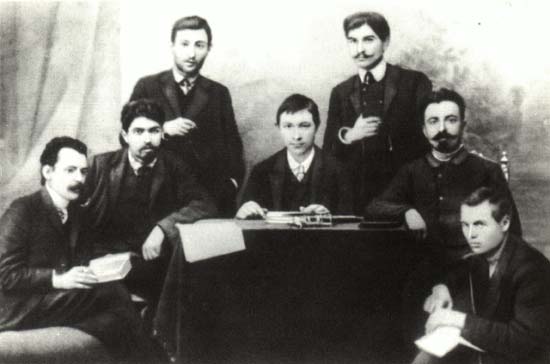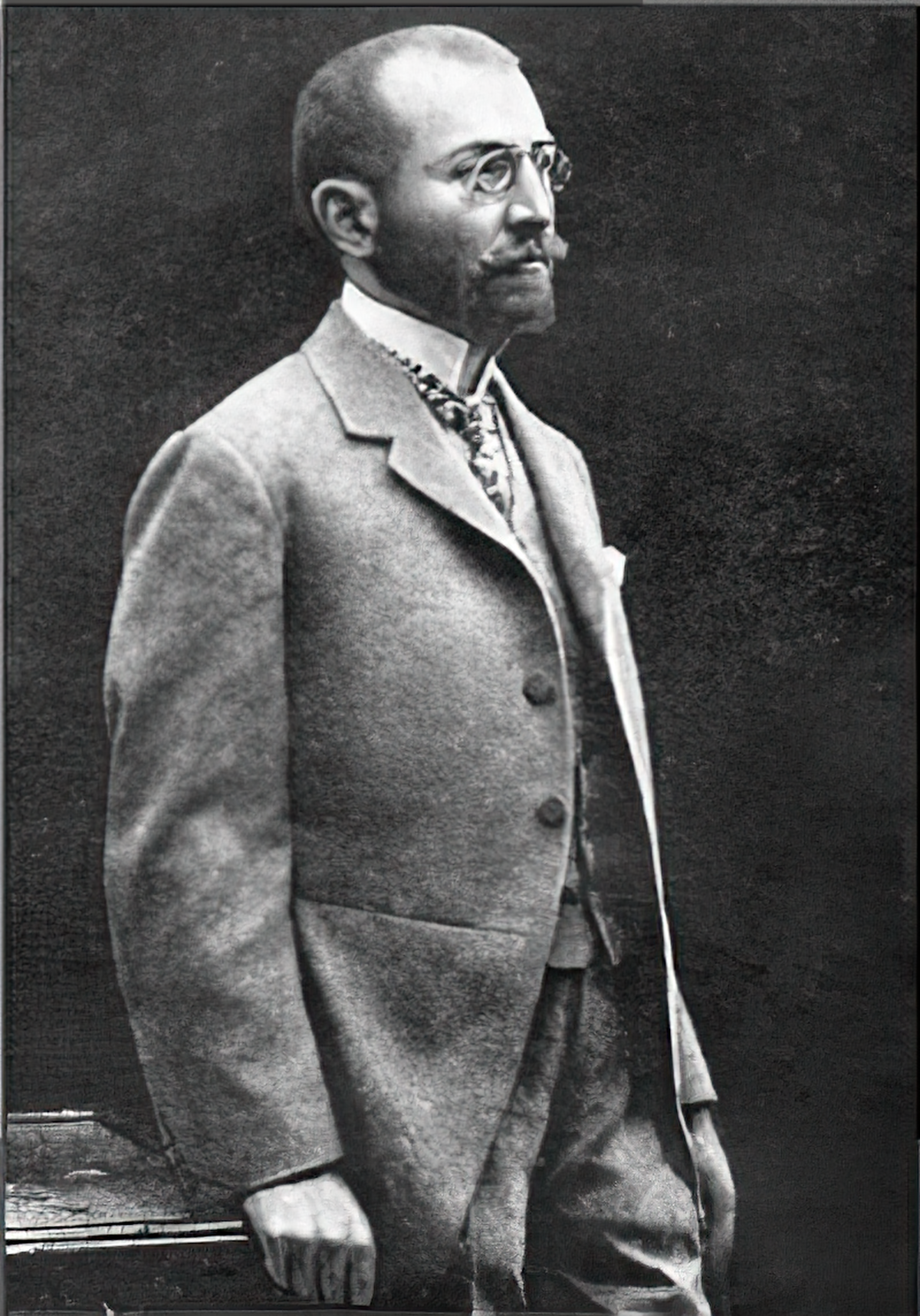|
Petros Adamian Tbilisi State Armenian Drama Theatre
Petros Adamian Tbilisi State Armenian Drama Theatre ( hy, Ստեփան Շահումյանի անվան հայկական պետական թատրոն ka, პეტროს ადამიანის სახელობის თბილისის სახემწიფო სომხური დრამატული თეატრი) was established in 1858 by the Armenian theater activist Gevorg Chmshkyan. Armenian writer Gabriel Sundukyan was among the supporters of theater. History The first staging was "Haji Suleyman". From 1922 to 1936 the theatre's name was "Artistic theatre". In 1936 a new theatre building was finished which was named after Bolshevik Stepan Shahumian. The first performance was Mkrtich (Nikita) Djanan's performance "Shahname". Petros Adamian, Siranoush, Vahram Papazian, Hovhannes Abelian, Olga Maysourian, Isaac Alikhanian, Mariam Mojorian, Artem and Maria Beroians, Babken Nersesian, directors: Arshak Bourdjalian, Leon Kalantar, Roman Matiashvil ... [...More Info...] [...Related Items...] OR: [Wikipedia] [Google] [Baidu] |
Gabriel Sundukyan
Gabriel Sundukian ( hy, Գաբրիել Սունդուկյան; 11 July 1825 – 29 March 1912) was an Armenian writer and playwright, the founder of modern Armenian drama. in ''Encyclopedia of Literature''. Vol. 11. Moscow. 1929–1939. Biography Born in , in a wealthy Armenian family, Sundukian learned both classical and modern Armenian, French, Italian and Russian, studied at the University of Saint-Petersburg, where he wrote a dissertation on the principles of Persian versification. Then he returned to Tiflis and entered the civil ...[...More Info...] [...Related Items...] OR: [Wikipedia] [Google] [Baidu] |
Bolshevik
The Bolsheviks (russian: Большевики́, from большинство́ ''bol'shinstvó'', 'majority'),; derived from ''bol'shinstvó'' (большинство́), "majority", literally meaning "one of the majority". also known in English as the Bolshevists,. It signifies both Bolsheviks and adherents of Bolshevik policies. were a far-left, revolutionary Marxist faction founded by Vladimir Lenin that split with the Mensheviks from the Marxist Russian Social Democratic Labour Party (RSDLP), a revolutionary socialist political party formed in 1898, at its Second Party Congress in 1903. After forming their own party in 1912, the Bolsheviks took power during the October Revolution in the Russian Republic in November 1917, overthrowing the Provisional Government of Alexander Kerensky, and became the only ruling party in the subsequent Soviet Russia and later the Soviet Union. They considered themselves the leaders of the revolutionary proletariat of Russia. Their beliefs and ... [...More Info...] [...Related Items...] OR: [Wikipedia] [Google] [Baidu] |
Stepan Shahumian
Stepan Georgevich Shaumian (; , ''Step’an Ge'vorgi Shahumyan''; 1 October 1878 – 20 September 1918) was a Bolshevik revolutionary and politician active throughout the Caucasus. Arzumanyan, M. Շահումյան, Ստեփան Գևորգի. "Yerevan, Armenian SSR, vol. viii", ''The Soviet Armenian Encyclopedia'', 1982, pp. 431–34 Shahumyan was an ethnic Armenian and his role as a leader of the Russian revolution in the Caucasus earned him the nickname of the "Caucasian Lenin", a reference to the leader of the Russian Revolution, Vladimir Lenin. The founder and editor of several newspapers and journals, Shaumian is best known as the head of the Baku Commune, a short lived committee appointed by Lenin in March 1918 with the task of leading the revolution in the Caucasus and West Asia. His tenure as leader of the Baku Commune was marred with numerous problems including ethnic violence between Baku's Armenian and Azerbaijani populations, attempting to defend the city against a ... [...More Info...] [...Related Items...] OR: [Wikipedia] [Google] [Baidu] |
Shahname
The ''Shahnameh'' or ''Shahnama'' ( fa, شاهنامه, Šāhnāme, lit=The Book of Kings, ) is a long epic poem written by the Persian poet Ferdowsi between c. 977 and 1010 CE and is the national epic of Greater Iran. Consisting of some 50,000 "distichs" or couplets (two-line verses), the ''Shahnameh'' is one of the world's longest epic poems. It tells mainly the mythical and to some extent the historical past of the Persian Empire from the creation of the world until the Muslim conquest in the seventh century. Iran, Azerbaijan, Afghanistan, Tajikistan and the greater region influenced by Persian culture such as Armenia, Dagestan, Georgia, Turkey, Turkmenistan and Uzbekistan celebrate this national epic. The work is of central importance in Persian culture and Persian language, regarded as a literary masterpiece, and definitive of the ethno-national cultural identity of Iran. It is also important to the contemporary adherents of Zoroastrianism, in that it traces the histo ... [...More Info...] [...Related Items...] OR: [Wikipedia] [Google] [Baidu] |
Petros Adamian
Petros Heronimosi Adamian ( hy, Պետրոս Հերոնիմոսի Ադամեան, December 21, 1849, Istanbul – , 1891, Istanbul, Ottoman Empire) was an Armenian actor, poet, writer, artist and public figure. Biography Adamian's mother died when he was one and a half years old. He started his artistic career at the age of seventeen, in the play "William the Conqueror." After a first period in his career where he gradually won recognition in the theater groups of Constantinople, in 1879 he was hired by the Armenian Theater Board of Tiflis and the golden period of his career started afterwards in the Caucasus. He would abandon the historical plays and the French melodramas to enter the world of Shakespeare. Since 1879 he performed in Baku, Shushi, Alexandropol, Tiflis. In the 1880s, when the Ottoman Turkish reaction "held the national minorities in scorn", [...More Info...] [...Related Items...] OR: [Wikipedia] [Google] [Baidu] |
Vahram Papazian
Vahram Papazian or Papazyan ( hy, Վահրամ Քամերի Փափազյան, January 6, 1888 in Constantinople, Ottoman Empire – June 5, 1968 in Yerevan, Armenia), was a Soviet actor who was an ethnic Armenian, mostly known for his Shakespearean roles. Vahram had done plays in Constantinople, Tiflis, Baku Armenian theaters, Moscow's Maly Theatre and in France, Italy, Austria, Spain, and Belgium. Papazian began his career in 1908, where he was regarded as one of the best Armenian actors at the time. Before his death he was known as the leading star in the Sundukyan Academic Theatre. The ''Council of National Literature's'' wrote that 'Vahram Papazian's Othello dominated the Armenian stage for more than half a century'. In 1933, Rezā Shāh decided to create the National State Theatre Company and invited Vahram Papazian to cast a number of shows for the Iranian Red Cross. Legacy Vahram Papazian is buried at Komitas Pantheon which is located in the city center of Yerevan ... [...More Info...] [...Related Items...] OR: [Wikipedia] [Google] [Baidu] |
Hovhannes Abelian
Hovhannes Harutyuni Abelian ( hy, Հովհաննես Աբելյան, October 23, 1865, Shamakhi, Baku Governorate, Russian Empire - July 1, 1936, Yerevan, Soviet Armenia) was an Armenian actor, People's Artist of the Armenian SSR (1925). Biography From 1882, he worked in Armenian and Russian theatres of Baku and Tiflis Tbilisi ( ; ka, თბილისი ), in some languages still known by its pre-1936 name Tiflis ( ), is the capital and the largest city of Georgia, lying on the banks of the Kura River with a population of approximately 1.5 million pe .... In 1908, he became the founder of " Abelian-Armenian Theatral Group", realised artistic tours in different countries (Russia, Iran, Germany, France, USA). In 1925, Abelian entered to the Armenian State Theatre, played in cinema ("Namus", 1925). A realistic-style actor, he played more than 300 roles. Sources * Armenian Concise Encyclopedia, Ed. by acad. K. Khudaverdian, Yerevan, 1990, p. 11 * External ... [...More Info...] [...Related Items...] OR: [Wikipedia] [Google] [Baidu] |
Aram Khachaturian
Aram Ilyich Khachaturian (; rus, Арам Ильич Хачатурян, , ɐˈram ɨˈlʲjitɕ xətɕɪtʊˈrʲan, Ru-Aram Ilyich Khachaturian.ogg; hy, Արամ Խաչատրյան, ''Aram Xačʿatryan''; 1 May 1978) was a Soviet and Armenian composer and conductor. He is considered one of the leading Soviet composers. Born and raised in Tbilisi, the multicultural capital of Georgia, Khachaturian moved to Moscow in 1921 following the Sovietization of the Caucasus. Without prior music training, he enrolled in the Gnessin Musical Institute, subsequently studying at the Moscow Conservatory in the class of Nikolai Myaskovsky, among others. His first major work, the Piano Concerto (1936), popularized his name within and outside the Soviet Union. It was followed by the Violin Concerto (1940) and the Cello Concerto (1946). His other significant compositions include the '' Masquerade Suite'' (1941), the Anthem of the Armenian SSR (1944), three symphonies (1935, 1943, 1947), and ar ... [...More Info...] [...Related Items...] OR: [Wikipedia] [Google] [Baidu] |
Armen Tigranian
Armen Tigranian or Tigranyan or Dikranian ( hy, Արմեն Տիգրանի Տիգրանյան; 26 December 1879, Alexandropol – 10 February 1950, Tbilisi) was an Armenian composer, conductor and sociocultural activist. His best-known work is ''Anoush'', premiered in Alexandropol in 1912. It is the first opera ever performed in Armenia. Early Years Tigranian was born in Alexandropol in the Russian Empire (present-day Gyumri, Armenia). Composer Vardan Tigranyan (1906–1974) and architect Edmond Tigranyan were his sons. He became interested in music at a very early age. In 1894, he moved to Tiflis (now Tbilisi) with his family, enrolled in the local music school where he mastered the flute, studied the piano and took classes in music theory under Nikolay Klenovsky. During the same period he studied composition with Makar Yekmalyan. Tigranian returned to Alexandropol in 1902 and devoted himself to teaching and composing music. He organized an amateur mixed choir and gave his firs ... [...More Info...] [...Related Items...] OR: [Wikipedia] [Google] [Baidu] |
Alexander Spendiarian
Alexander Afanasyevich Spendiarov (Spendiaryan) (russian: Александр Афанасьевич Спендиаров, hy, Ալեքսանդր Ստեփանոսի Սպենդիարյան, November 1, 1871, Kakhovka, Russian Empire – May 7, 1928, Yerevan, Armenia) was an Armenian and Soviet music composer, conductor, founder of Armenian national symphonic music. Biography Alexander Spendiarov was born on 1 November (as 20 October) 1871 in Kakhovka, province of Tavrik (modern Ukraine). His artistic abilities were formed in early childhood. He inherited his musical abilities from his mother who played piano. When Alexander Spendiarov was seven he wrote a waltz. In 1890 he went to Moscow and studied for one year in the Natural Sciences faculty of Moscow University, and then in 1894 he graduated from the Law faculty. At the same time he continued his violin classes. In 1896 Alexander Spendiarov went to St. Petersburg to show his compositions to Nikolai Rimsky-Korsakov, who grea ... [...More Info...] [...Related Items...] OR: [Wikipedia] [Google] [Baidu] |
Cultural Venues In Tbilisi
Culture () is an umbrella term which encompasses the social behavior, institutions, and norms found in human societies, as well as the knowledge, beliefs, arts, laws, customs, capabilities, and habits of the individuals in these groups.Tylor, Edward. (1871). Primitive Culture. Vol 1. New York: J.P. Putnam's Son Culture is often originated from or attributed to a specific region or location. Humans acquire culture through the learning processes of enculturation and socialization, which is shown by the diversity of cultures across societies. A cultural norm codifies acceptable conduct in society; it serves as a guideline for behavior, dress, language, and demeanor in a situation, which serves as a template for expectations in a social group. Accepting only a monoculture in a social group can bear risks, just as a single species can wither in the face of environmental change, for lack of functional responses to the change. Thus in military culture, valor is counted a typica ... [...More Info...] [...Related Items...] OR: [Wikipedia] [Google] [Baidu] |









